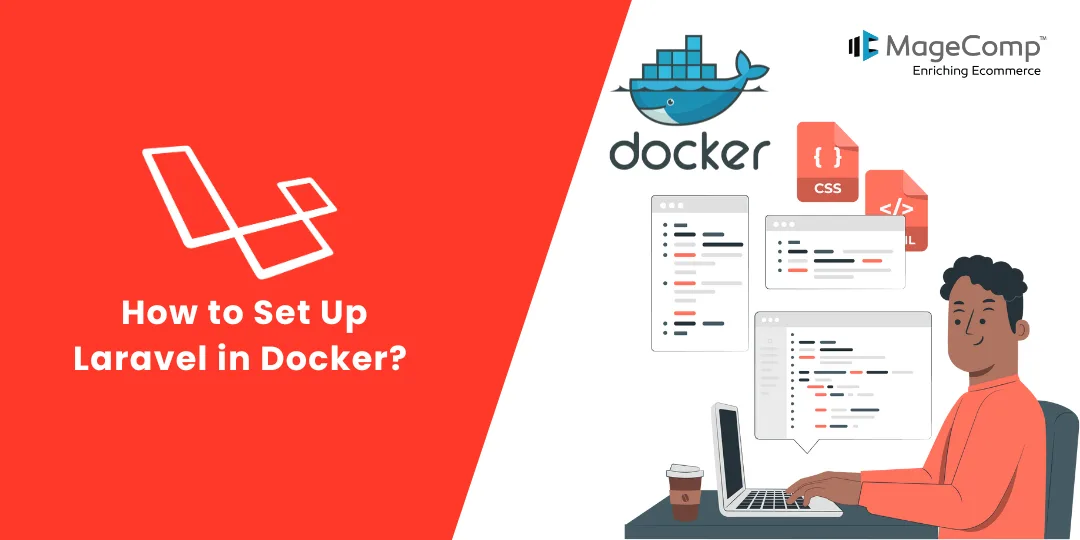Laravel is a popular PHP framework for building web applications. Docker is a platform for developing, deploying, and running applications in containers. Docker offers a convenient solution for creating isolated environments that can run seamlessly across different systems. By combining Laravel with Docker, you can create a portable and consistent development environment for your Laravel projects.
In this guide, we’ll walk through the process of setting up Laravel in Docker with Apache and MySQL, empowering you to streamline your development process effortlessly.
Why use Laravel with Docker?
Before we dive into the setup process, let’s quickly highlight the advantages of using Docker for Laravel development:
- Consistency: Docker ensures that your development environment remains consistent across various machines, eliminating the dreaded “works on my machine” dilemma.
- Isolation: Each Docker container encapsulates dependencies and configurations, preventing conflicts with other projects or system configurations.
- Scalability: Docker simplifies scaling your Laravel application by allowing easy replication of containers for local development, testing, or production deployment.
- Portability: Docker containers can be seamlessly deployed across different platforms, making it effortless to move your Laravel application from development to production environments.
Setting Up Laravel in Docker with Apache and MySQL:
Let’s dive into the step-by-step process of setting up Laravel in Docker with Apache and MySQL:
Step 1: Install Docker
Ensure Docker is installed on your system. If not, you can download and install it from the official Docker website ( https://www.docker.com/get-started ).
Step 2: Create Laravel Project
Begin by creating a new Laravel project or use an existing one. You can create a new Laravel project using Composer by running the following command:
composer create-project --prefer-dist laravel/laravel my-laravel-app
Step 3: Dockerfile
Create a `Dockerfile` in the root directory of your Laravel project to define the environment for your Docker container. Here’s an example tailored for Apache and PHP:
Dockerfile
FROM php:8.1-apache // Your project sutable veriosn specify WORKDIR /var/www/html RUN docker-php-ext-install pdo pdo_mysql mysqli COPY . . EXPOSE 80 CMD ["apache2-foreground"]
Step 4: Docker Compose
Create a `docker-compose.yml` file in the same directory to define services for Apache, MySQL, and volumes for data persistence. Here’s an example:
docker-compose.yml
version: '3'
services:
app:
build:
context: .
dockerfile: Dockerfile
ports:
- "8000:80"
volumes:
- .:/var/www/html
db:
image: mysql:5.7
ports:
- "3306:3306"
environment:
MYSQL_ROOT_PASSWORD: secret
MYSQL_DATABASE: laravel
MYSQL_USER: laravel_user
MYSQL_PASSWORD: secret
Step 5: Environment Configuration
Ensure your Laravel `.env` file is configured to use MySQL. Update the following fields:
dotenv
DB_CONNECTION=mysql DB_HOST=db DB_PORT=3306 DB_DATABASE=laravel DB_USERNAME=laravel_user DB_PASSWORD=secret
Step 6: Build and Run Docker Containers
Navigate to your project directory in the terminal and run the following command to build and run your Docker containers:
docker-compose up --build
Step 7: Access Laravel Application
Once the Docker containers are up and running, you can access your Laravel application by visiting `http://localhost:8000` in your web browser.
Conclusion:
In conclusion, leveraging Docker for Laravel development with Apache and MySQL integration offers a host of benefits, including consistency, scalability, and portability. By following the steps outlined in this guide, you can quickly set up your Laravel environment within Docker, enabling seamless collaboration and efficient development practices. Embrace Docker’s power and elevate your Laravel projects to new heights of productivity and scalability.
Happy Coding!












